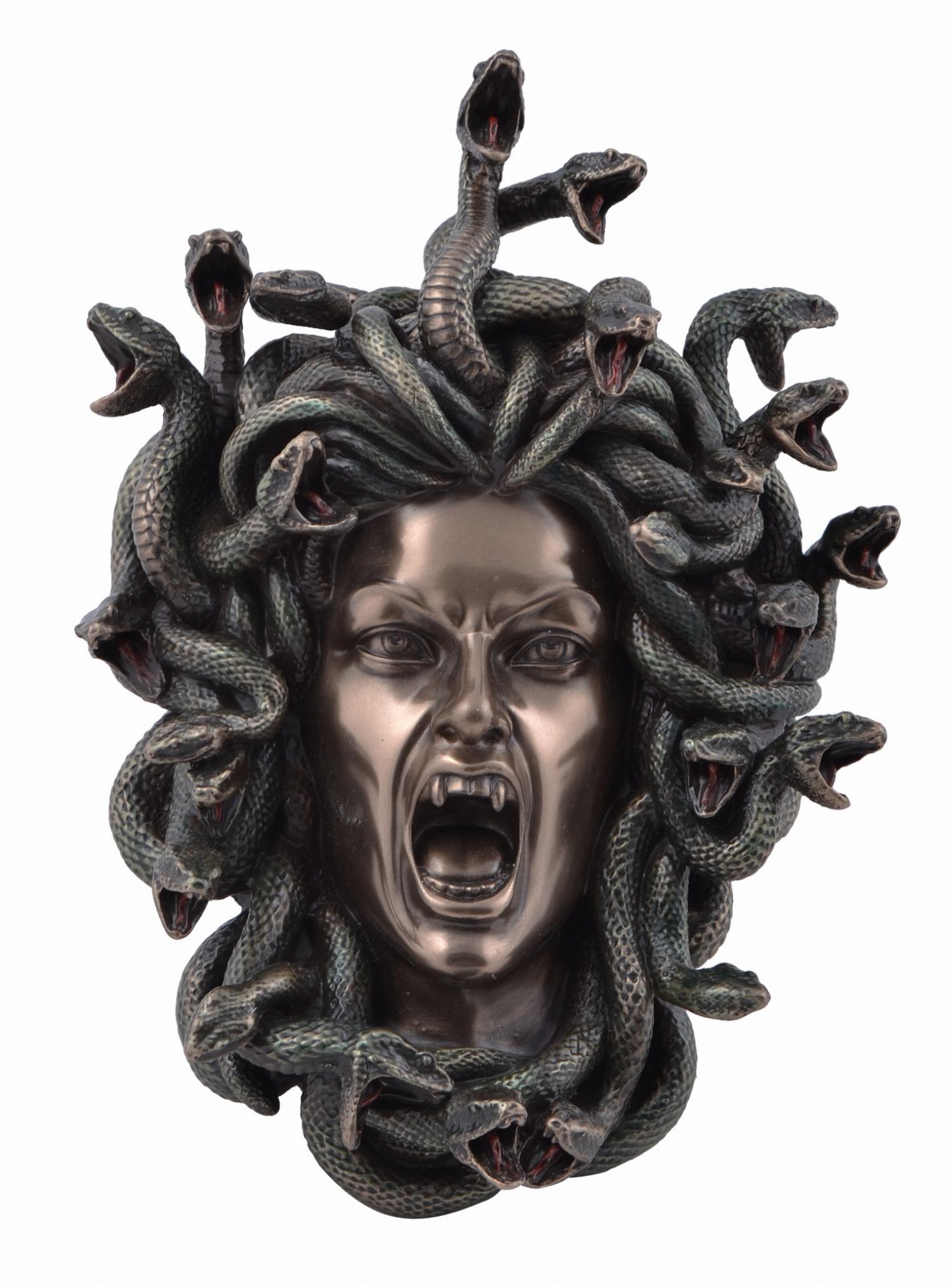

The sculpture displays the moment that Medusa looks into an imaginary mirror and, with horror, turns herself to stone. “I do not know if mortal chisel sculpted me thus, / or, in reflecting myself in a clear glass, /sight of myself made me such.”Īs a result, Medusa’s Head by Bernini is striking in its metaphorical ability to represent the sculptor’s ability to “petrify” those who admire his skill. Marino’s poem on the other hand, is to be read from the perspective of Medusa herself: The Metamorphoses is a collection of myths about the transition of beings from one state to another, and Medusa herself is transformed from a beautiful woman into a fearsome Gorgon, in one remarkable passage. Bernini crafted this sculpture, inspired by Ovid’s Metamorphoses and Giovan Battista Marino’s poem about Medusa. Medusa In The Mirror Bust of the Medusa by Bernini, 1644-1648, via Musei Capitolini, Romeīernini’s famous head of Medusa is magnificent to behold. Her anguished face sets the scene for the audience of the theater to empathically share in her tragedy.ģ. Staring into Medusa’s eyes causes an illusionist trick as, while staring, the surrounding mosaic appears to pulsate slightly. The mosaic’s style enhances the illustration of Medusa’s entrapment in a curse. Athena was enraged at Poseidon but could not avenge herself on him because of his status as a god, therefore her wrath fell upon the undeserving victim: Medusa. The god Poseidon raped Medusa in Athena’s temple which violated the sacredness of the temple. Medusa is a perfect subject for theatrical decoration because Medusa’s own myth is a tragedy. The Greeks had two main themes in theatre: tragedy and comedy. 1st century A.D., Kibyra, via Daily Sabah She epitomizes tragedy, a suitable theme for the theatre. By centralizing Medusa’s eyes, her look of anguish and pain is enhanced, her misery shown by her pulled together eyebrows, and twisted neck. It mirrors the power of Medusa’s gaze, a magnifying force that pulls in the audience to look at the source of power – the eyes – to which the viewer will be eternally transfixed. This type of mosaic is uncommon and arresting, and the pattern combined with the vibrant color enhances the dynamic change from the face to its surroundings. Medusa’s hair, and the outer shape of her face are a blur and they bleed into the distorted but colorful background. From what has been uncovered by the restoration, we can see that this beautiful piece of Medusa art focuses on her eyes and expression. This piece of Medusa art was recently found in an ancient Odeon (theater) in Kibrya, Turkey, and it may date back to the 1st century A.D. Medusa: Tragedy At The Theatre Medusa Mosaic from the Odeon in Ancient Kibyra, c.


 0 kommentar(er)
0 kommentar(er)
